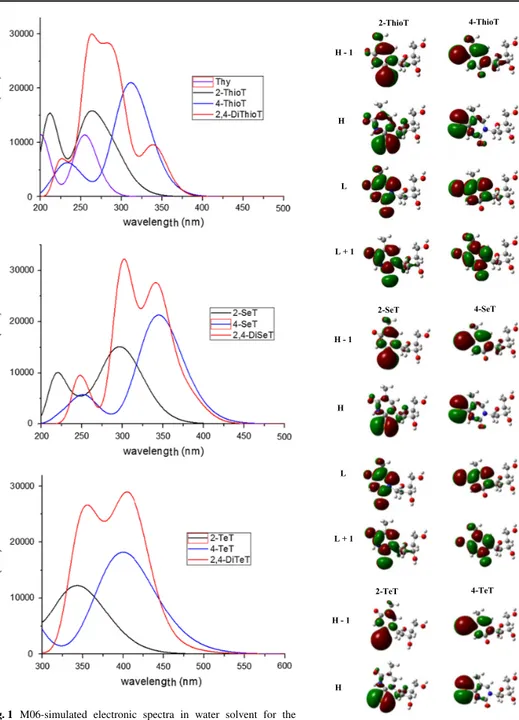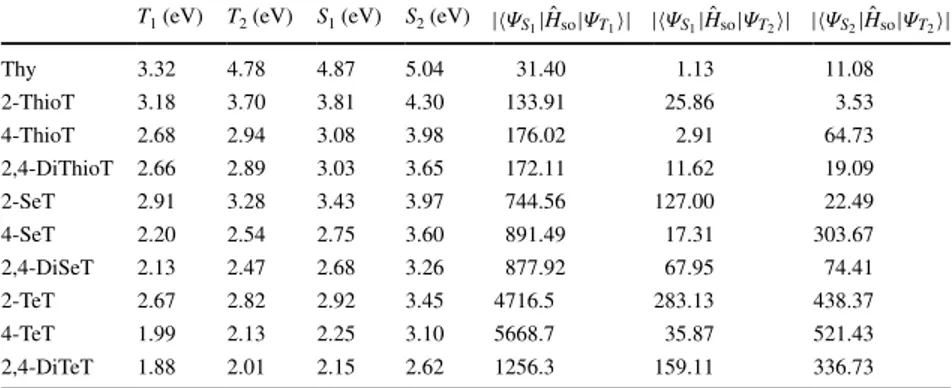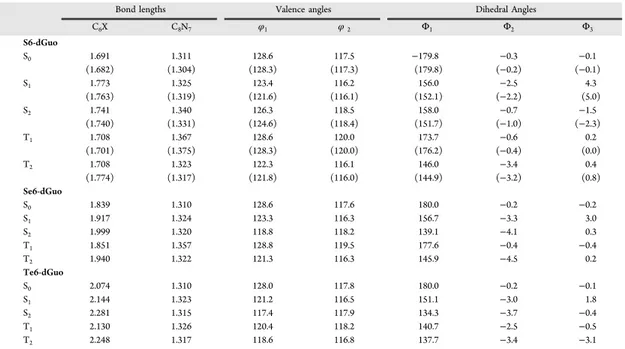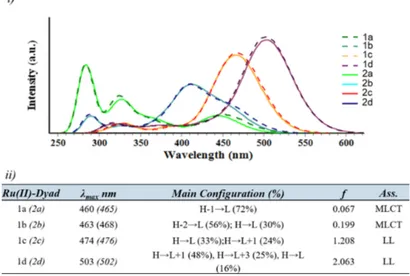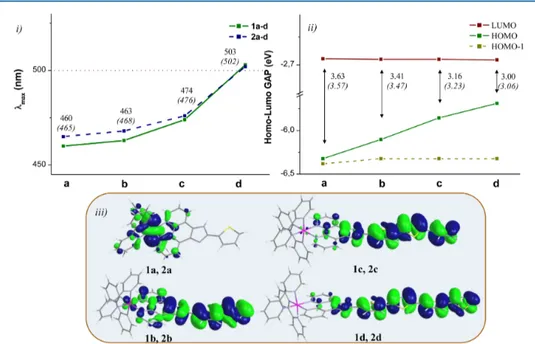i
Photodynamic'therapy'(PDT)'is'a'non:invasive'therapeutic'technique' for' the' treatment' of' different' kind' of' tumours' through' the' production' of' reactive'oxygen'species'(ROS)'that'act'as'cytotoxic'agents.''''
PDT' works' through' the' associated' events' of' three' key' components:' photosensitizer' (PS),' visible' or' near:infrared' region' light,' and' molecular' oxygen'in'tissues.'In'general,'after'the'injection'of'a'PS'agent'and'subsequent' accumulation'in'the'target'tissues,'the'agent'is'activated'by'a'radiation'with' appropriate' wavelength' to' give' a' photosensitization' of' the' endogenous' oxygen'(photoreaction'of'type'II)'or'the'production'of'free'radicals'from'the' surrounding' molecules' (photoreaction' of' type' I).' In' both' cases,' a' cytotoxic' species'is'generated,'and'destruction'of'the'cancer'cells'occurs.'
Success'in'PDT'relies'on'the'advantage'that'a'non:invasive'technique' can'selectively'annihilate'altered'cells'without'undesirable'side'effects.'Recent' research' in' PDT' has' been' focused' on' the' development' of' more' specific' and' powerful'PSs.'
In' this' thesis,' the' photophysical' properties' of' different' kinds' of' PSs,' found'to'be'good'candidates'for'PDT,'have'been'investigated.'The'PSs'under' study'differ'in'the'chemical'nature'and'in'the'photosensitization'mechanism:' i)' PSs' based' on' the' nucleobases' analogue' of' DNA' can' be' used' as' UVA' chemotherapeutic'agents,'due'to'their'absorption'in'the'range'300−400'nm;' ii)'PSs'based'on'the'Ru(II)'polypyridine'complex,'which'are'designed'to'give'a' long:lying'excited'state,'can'act'as'PSs'through'both'type'I'and'II'reactions;'iii)' PSs' based' on' aza:BODIPY' core' should' be' of' interest' for' type' II' mechanism.' Other' BODIPY' derivatives,' linked' to' an' antioxidant' molecule' (e.g.' α: tocopherol)' have' been' suggested' to' obtain' a' chemicontrolled' 1O2'
photosensitization.'
Density' functional' theory' (DFT)' and' time:dependent' DFT' (TD:DFT)' have' been'employed'in'all'the'computations.''
ii '
La'terapia'fotodinamica'(PDT)'è'una'tecnica'medica'non:invasiva'per'il' trattamento' di' varie' forme' tumorali' mediante' la' produzione' di' specie' altamente' reattive' dell’ossigeno' (ROS)' che' agiscono' da' agenti' citotossici.' La' PDT' esplica' la' sua' funzione' attraverso' l’azione' combinata' di' tre' componenti' chiave:' il' fotosensibilizzatore' (PS),' la' luce' ad' un’adeguata' lunghezza' d’onda' (UV:vis),' e' l’ossigeno' presente' nei' tessuti.' Dopo' la' somministrazione' dell’agente' fotoreattivo,' ed' il' successivo' accumulo' nei' tessuti' malati,' il' PS' viene' attivato' mediante' irraggiamento' con' luce' di' opportuna' lunghezza' d’onda,' che' provoca' la' fotosensibilizzazione' dell’ossigeno' endogeno' (fotoreazioni' di' tipo' II)' oppure' la' formazione' di' specie' radicaliche' a' partire' dai'substrati'biologici'presenti'nell’ambiente'di'reazione'(fotoreazioni'di'tipo' II).' Entrambi' i' casi' comportano' la' generazione' di' specie' citotossiche' che' portano'alla'morte'delle'cellule'tumorali.''
La'capacità'di'causare'la'distruzione'selettiva'delle'cellule'tumorali'e' l’assenza'di'effetti'collaterali,'rappresentano'i'maggiori'vantaggi'della'PDT.''La' moderna' ricerca' in' PDT' è' finalizzata' soprattutto' allo' sviluppo' di' nuovi' fotosensibilizzatori'sempre'più'selettivi'ed'efficaci.''
Nella' seguente' tesi' sono' state' studiate' le' proprietà' fotofisiche' di' una' serie'di'promettenti'fotosensibilizzatori'che'differiscono'nella'natura'chimica' e'nel'meccanismo'di'azione:'i)'Fotosensibilizzatori'derivati'delle'basi'azotate' del' DNA,' che' possono' essere' usati' come' agenti' chemioterapeutici' UVA' (assorbono' nell’intervallo' 300:400' nm);' ii)' Fotosensibilizzatori' basati' sui' complessi' polipiridinici' di' Ru(II)' che,' ' opportunamente' sostituiti,' possono' accedere' ad' uno' stato' eccitato' con' lungo' tempo' di' vita' innescando' fotoreazioni'di'tipo'I'e'II;'iii)'Fotosensibilizzatori'derivati'dell’aza:BODIPY'che' favoriscono' fotoreazioni' di' tipo' II.' ' Fotosensibilizzatori' derivati' del' BODIPY' funzionalizzati'con'degli'antiossidanti'(es.'α:tocoferolo)'che'sono'in'grado'di' controllare' a' livello' chimico' l’azione' citotossica' dei' ROS' nell’ambiente' cellulare.'
iii CONTENTS' ! Introduction!!!!!!!!!!!!!!!!!!!!!!!!!!!!!!!!!!!!!!!!!!!!!!!!!!!!!!!!!!!!!!!!!!!!!!!!!!!!!!!!!!!!!!!!!!!!!!!!!!!!!!!!1! List!of!papers!included!in!this!thesis!!!!!!!!!!!!!!!!!!!!!!!!!!!!!!!!!!!!!!!!!!!!!!!!!!!!!!!!!!!2! 1.! PHOTODYNAMIC'THERAPY'''''''''''''''''''''''''''''''''''''''''''''''''''''''''''''''''''''! 1.1.!PDT:!DEFINITION!AND!BRIEF!HISTORY!!!!!!!!!!!!!!!!!!!!!!!!!!!!!!!!!!!!!!!!!!!!!!!!!3! 1.2.!TWO!TYPE!OF!PHOTODYNAMIC!MECHANISM!!!!!!!!!!!!!!!!!!!!!!!!!!!!!!!!!!!!!4!! 1.3.!THREE!REQUIRED!COMPONENTS!FOR!PDT!!!!!!!!!!!!!!!!!!!!!!!!!!!!!!!!!!!!!!!!!!8! 1.3.1!LIGHT!!!!!!!!!!!!!!!!!!!!!!!!!!!!!!!!!!!!!!!!!!!!!!!!!!!!!!!!!!!!!!!!!!!!!!!!!!!!!!!!!!!!!!!!!!!!!!!!!!!!!!!!!!!!8!!!!!!!!!!!!!!!!!!!!!!!!!!!!!!!!!!!!!!!!!!!!!!!!!!!!!!!!!!!!!!!!!!!!!!!!!!!!!!!!!!!!!!!!!!!!!!!!!!!!!!!!!!!!!!!!!! 1.3.1.1! INTERACTION!RADIATIONLMATTER!!!!!!!!!!!!!!!!!!!!!!!!!!!!!!!!!!!!10! 1.3.2!DIOXYGEN!!!!!!!!!!!!!!!!!!!!!!!!!!!!!!!!!!!!!!!!!!!!!!!!!!!!!!!!!!!!!!!!!!!!!!!!!!!!!!!!!!!!!!!!!!!!!!!!!12! 1.3.3!PHOTOSENSITIZERS!IN!PDT!!!!!!!!!!!!!!!!!!!!!!!!!!!!!!!!!!!!!!!!!!!!!!!!!!!!!!!!!!!!!!!14! 1.4.!PHOTOPHYSICAL!AND!PHOTOCHEMICAL!PROCESSES!IN!PDT!!!!19! 1.4.1!PHOTOPHYSICS!OF!EXCITED!STATES!!!!!!!!!!!!!!!!!!!!!!!!!!!!!!!!!!!!!!!!!!!!!20! 1.4.1.1! PHOTOPHYSICS!OF!PURE!ORGANIC!MOLECULES!!!!!!!!!!!!24! 1.4.1.2! PHOTOPHYSICS!OF!TRANSITION!METAL!COMPLEXES!!!25! 1.4.2!PHOTOCHEMISTRY!OF!EXCITED!STATES!!!!!!!!!!!!!!!!!!!!!!!!!!!!!!!!!!!!!!27! !! Bibliography !!!!!!!!!!!!!!!!!!!!!!!!!!!!!!!!!!!!!!!!!!!!!!!!!29 ! 2.! !COMPUTATIONAL'METHODS! 2.1.!DENSITY!FUNCTIONAL!THEORY!(DFT)!!!!!!!!!!!!!!!!!!!!!!!!!!!!!!!!!!!!!!!!!!!!!!32! 2.1.1!THE!EXCHANGE!CORRELATION!PART!IN!DFT!!!!!!!!!!!!!!!!!!!!!!!!!!!!34! 2.1.2!BASIS!SETS!AND!EFFECTIVE!CORE!POTENTIAL!(ECP)!!!!!!!!!!!!!36! 2.2.!TIMELDEPENDENT!DENSITYLFUNCTIONAL!THEORY!(TDLDFT)!38!
iv 2.3.!SOLVATION!AND!DIELECTRIC!EFFECTS!!!!!!!!!!!!!!!!!!!!!!!!!!!!!!!!!!!!!!!!!!!!!!39! 2.4.!SPINLORBIT!COUPLING!!!!!!!!!!!!!!!!!!!!!!!!!!!!!!!!!!!!!!!!!!!!!!!!!!!!!!!!!!!!!!!!!!!!!!!!!!!!!!40!! 2.4.1!THE'BREIT:PAULI'SPIN:ORBIT'HAMILTONIAN!!!!!!!!!!!!!!!!!!!!!!!!!!!41! 2.4.2!EFFECTIVE'ONE:ELECTRON'SPIN:ORBIT'COUPLING'OPERATORS'41' 2.5.!FERMILGOLDEN!RULE!!!!!!!!!!!!!!!!!!!!!!!!!!!!!!!!!!!!!!!!!!!!!!!!!!!!!!!!!!!!!!!!!!!!!!!!!!!!!!!!42! 2.6.!PHOTOINDUCED!ELECTRON!TRANSFER!!!!!!!!!!!!!!!!!!!!!!!!!!!!!!!!!!!!!!!!!!!!!43! 2.6.1!GIBBS!ENERGY!OF!PHOTOINDUCED!ELECTRON!TRANSFER!!!!!!!!!!!!44! !! Bibliography!!!!!!!!!!!!!!!!!!!!!!!!!!!!!!!!!!!!!!!!!!!!!!!!!!!!!!!!!!!!48 3.! RESULTS'AND'DISCUSSION' 3.1.!ANALOGUES'OF'NITROGENOUS'BASES''''''''''''''''''''''''''''''''''''''''''''''''51' 3.1.1!Photophysical Properties Prediction of Selenium and Tellurium Substituted Thymidine as Potential UVA Chemotherapeutic Agents (PAPER I) 54
3.1.2!Photophysical Properties of S, Se and Te-Substituted
Deoxyguanosines: Insight into Their Ability to Act as Chemotherapeutic Agents (PAPER II) 54
3.2.!Ru(II)POLYPYRIDIL'COMPLEXES'''''''''''''''''''''''''''''''''''''''''''''''''''''''''''55' 3.2.1!Theoretical Exploration of Type I/Type II Dual Photoreactivity of
Promising Ru(II) Dyads for PDT Approach
'
(PAPER III) 57
'
3.3.!BODIPY:DERIVATIVES''''''''''''''''''''''''''''''''''''''''''''''''''''''''''''''''''''''''''''''58'v Aza-BODIPY Derivatives
(PAPER IV) 63
3.3.2!Theoretical Insights on the Switch On/Off Photosensitization in Chemicontrolled Photodynamic Therapy
(MANUSCRIPT) 64 !! Bibliography 65 !! PAPER I !! PAPER II !! PAPER III !! PAPER IV !! MANUSCRIPT V ! !
!
In# this# thesis,# we# reported# a# theoretical# investigation# performed# at#
density#functional#theory#(DFT)#and#time=dependent#DFT#(TD=DFT)#levels#of#
theory,# aimed# to# shed# light# on# the# photophysical# properties# of# a# series# of#
promising#photosensitizers#(PSs)#for#Photodynamic#Therapy#(PDT).##
PDT# is# known# as# one# of# the# non=invasive# therapeutic# techniques# to#
treat# different# kinds# of# tumors# through# the# production# of# reactive# species#
(ROS)#which#act#as#cytotoxic#agents.#Today#research#in#PDT#field#is#focused#on#
the#design#of#new#PSs,#more#efficient,#selective#and#with#multiple#therapeutic#
actions.##
Chapter# 1
# introduces# the# subject# of# the# thesis,# giving# the# main#
background#aspects#of#PDT,#a#brief#history,#and#mechanisms#of#photoreactions#
characterizing#PDT.#A#detailed#description#of#the#three#key#PDT#components—
light,# oxygen# and# photosensitizers—is# also# reported,# together# with# a# brief#
outline#of#photophysical#and#photochemical#PDT#processes.#
#
Chapter# 2# illustrates# the# computational# approaches# selected# to# study#
the# photophysical# properties# of# investigated# PSs.# In# particular,# the# quantum#
mechanical# methods# that# allow# to# predict# and# understand# molecular# excited#
states,# will# be# presented.# The# simulations# of# the# absorption# and# emission#
spectra#are#helpful#to#better#understand#the#experimental#adsorption#spectra#
and#to#characterize#the#electronic#transitions.#In#this#report,#TD=DFT#represent#
a# good# compromise# between# accuracy# and# computational# efforts,# especially#
for#large#systems#that#often#contain#heavy#atoms.##
Chapter#3
#is#devoted#to#the#obtained#results.#The#PSs#studied#differ#in#
the#chemical#nature,#in#the#possible#applications,#and#in#the#photosensitization#
mechanism:#i)#PSs#based#on#nucleobases#analogue#of#DNA#can#be#used#as#UVA#
chemotherapeutic#agents,#since#they#absorb#in#the#range#300 400#nm;#ii)#PSs#
based# on# the# Ru(II)# polypyridine# complex,# designated# to# give# a# long=lying#
excited#state,#can#act#as#PSs#in#both#type#I#and#II#mechanisms,#depending#on#
the# oxygen# concentration# in# target# tissue.# iii)# PSs# characterized# by# aza=
proposed# as# excellent# type# II# PSs.# Other# PSs# composed# combining# a# BODIPY#
dye# with# an# antioxidant# (e.g.# α=tocopherol),# are# suggested# to# give# a#
chemicontrolled#photosensitization.#
#
LIST)OF)PAPERS)INCLUDED)IN)THIS)THESIS)
#
1.! Photophysical Properties Prediction of Selenium- and
Tellurium-Substituted Thymidine as Potential UVA Chemotherapeutic Agents.
Jenny Pirillo; Bruna Clara De Simone; Nino Russo.
Theor Chem Acc 2016, 135, 8.
#
2.! Photophysical Properties of S, Se, Te-Substituted Deoxyguanosine:
Insight into Their Ability to Act as Chemotherapeutic Agents.
Jenny Pirillo; Gloria Mazzone; Nino Russo; Luca Bertini.
J Chem Inf Model 2016.!
DOI: 10.1021/acs.jcim.6b00486
!
#
3.! Theoretical Exploration of Type I/Type II Dual Photoreactivity of
Promising Ru(II) Dyads for PDT Approach.
Marta Erminia Alberto; Jenny Pirillo; Nino Russo; Carlo Adamo.
Inorg Chem 2016, 55, 11185-11192.
#
4.! Halogen Atom Effect on the Photophysical Properties of Substituted
Aza-BODIPY Derivatives.
Bruna Clara De Simone; Gloria Mazzone; Jenny Pirillo; Nino Russo;
Emilia Sicilia.
Phys Chem Chem Phys 2016, 19, 2530–2536.
!
!
5.! Theoretical Insights on the Switch on/off Photosensitization in
Chemicontrolled Photodynamic Therapy.
Jenny Pirillo; Gloria Mazzone; Nino Russo.
(MANUSCRIPT).
1.! PDT&'&PHOTODYNAMIC&THERAPY&
!
1.1.! PDT:&DEFINITION&AND&BRIEF&HISTORY&!
! PDT! is! known! as! a! non,invasive! therapeutic! technique! for! the! treatment! of! different! kinds! of! cancers! through! the! production! of! reactive! oxygen! species! (ROS)! that! act! as! cytotoxic! agents.! Therefore,! the! molecular! oxygen! naturally! present! in! biological!tissues!is!an!essential!player!in!PDT.!The!molecular!oxygen!can!be!activated! to!the!lowest!singlet!excited!oxygen!species!by!irradiation,!with!lasers!in!either!visible! or! near! infrared! region,! of! an! administered! photosensitizer! (PS).! The! generated! singlet!oxygen!is!reactive!enough!to!ablate!cells,!i.e.!damaging!cancer!cells!or!tumour! tissues.!
! The! history! of! phototherapy! dates! back! to! around! 2000! B.C.! For! instance,! it! was! explored! in! China! to! cure! smallpox! and! was! also! called! heliotherapy! in! Greece.! The! discovery! of! phototherapy! as! a! scientific! method! has! been! attributed! to! Niels! Rydberg! Finsen! (Nobel! Prize! in! Physiology! or! Medicine! in! 1903).! Examining! the! effects!caused!by!various!kinds!of!radiation!on!animals,!he!realized!that!the!red!light! possessed! the! best! therapeutic! effect,! in! particular,! to! cure! smallpox.! He! became! famous!for!the!development!of!a!phototherapeutic!method!to!cure!lupus!vulgaris!by! ‘filtered’!sunlight!(light!from!a!carbon!arc!appropriately!fitted!to!reduce!IR!intensity).! Some!researchers,!however,!believe!that!the!real!‘father’!of!phototherapy!is!Antonino! Sciascia,!who!invented!the!system!‘photocautery’!(got!the!patent!in!1894)!by!selective! concentration! of! light! with! a! specific! wavelength.! The! invention! was! applied! to! the! treatment!of!several!diseases,!and!he!introduced!phototherapy!as!a!scientific!method! for!the!first!time!in!the!XIII!Ophthalmologic!Congress!of!Palermo!in!18921.!!
! Since! then,! several! milestones! have! been! achieved.! Raab2! reported! a!
photodynamic! reaction! for! the! first! time! in! 1900.! He! studied! the! toxicity! of! several! dye,drugs! exposed! to! light! with! Herman! von! Tappeiner3,! who! introduced! the! term!
‘photodynamic!action’!in!1904.!He!carried!out!a!series!of!photodynamic!experiments! not! only! to! reveal! that! topical! application! of! eosin,! in! combination! with! sunlight! exposure,!can!cure!skin!carcinoma,!but!also!to!study!more!sophisticated!techniques!of! irradiating! different! kinds! of! sensitizers! with! two! light! sources,! i.e.! sunlight! and! arc! lamp.! Although! this! kind! of! PDT! seemed! to! be! very! promising,! the! selectivity! of! the! chromophore!for!the!tumor!tissue!could!not!be!proven.!
! The! missing! point! was! established! by! Lipson! et! al.! 4,5! in! 1960! when! they!
developed! a! Hematoporphyrin! derivative,! HpD,! that! represents! the! basis! of! modern! PS!for!PDT.!Lipson!and!co,workers!showed!selective!localization!of!HpD!in!the!tumor! tissue,! hence! it! was! considered! a! good! diagnostic! agent! for! cancer! detection! due! to! their!fluorescent!properties.!Afterwards,!several!studies!proved!the!cytotoxic!action!of! HpD!as!a!PS.!For!instance,!one!decade!after!the!characterization!of!HpD,!Diamond!et! al.6!reported!its!use!in!the!photodegradation!of!glioma!cells!implanted!in!rats,!and!in!
1978,! Dougherty! and! co,workers7! clinically! tested! PDT! in! subcutaneous! malignant!
tumours! using! HpD! as! a! PS.! HpD! led! to! the! rapid! development! of! PDT,! and! the! first! PDT! agent! was! approved! for! clinical! use! by! Canadian! authorities! in! 1993.! The! therapeutic!success!of!PDT!relies!on!the!advantage!that!a!non,invasive!technique!can! selectively! annihilate! altered! cells! without! incurring! further! risks.! The! recent! increasing! interest! in! PDT! involves! shifting! focus! onto! the! development! of! more! specific!and!powerful!sensitizers.! ! 1.2.! TWO&TYPES&OF&PHOTODYNAMIC&MECHANISMS& PDT!works!through!the!integration!of!three!key!components:!PSs,!the!visible! or!near!infrared!region!light,!and!molecular!oxygen!in!tissues.!! The!PDT!procedure!can!be!summarized!in!four!steps:! 1.! Injection!of!PSs!into!the!bodies;! 2.! Concentration!of!PSs!at!the!tumour!sites;!
3.! Activation! of! the! PSs! by! visible! light! with! suitable! wavelength! to! generate!reactive!oxygen!species!(ROS)!cytotoxic!species;!
! Figure!1.!Schematic!Jablonski’s!diagram!showing!the!two!photodynamic!pathways!for! the!different!types!of!chemical!reactions.! ! !In!the!PS!activation!process!by!light!(Figure!1),!the!PS!will!typically!be!excited! from!the!ground!state!S0!(usually!closed,shell!ground!state:!singlet!spin!multiplicity)!
to!the!singlet!excited!state!S1!within!ns!order!lifetimes!that!is!too!short!to!interact!with!
surrounding!molecules.!Energy!releasing!can!take!place!during!the!return!from!the!S1!
state!to!the!S0!ground!state!via!either!a!radiative!process,!i.e.!fluorescence,!or!a!non,
radiative! process! which! can! occur! after! an! inter,system! crossing! (ISC)! to! the! triplet! excited!state!T1!(forbidden!by!the!selection!rules!in!principle)! allowed!by!spin,orbit!
couplings.!Further!deactivation!from!the!T1!state!can!be!caused!either!by!internal!or!
external!conversion!or!by!phosphorescence.!In!order!to!reach!the!S0!ground!state!from!
the!T1!one,!a!second!spin!forbidden!process!should!be!overcome.!Since!the!transition!
probability!and!the!lifetime!of!excited,states!are!inversely!correlated,!the!lifetime!of!T1!
(bs!to!ms!order)!is!usually!longer!than!that!of!S1.!!
!The! longer! lifetime! of! the! T1! state! is! sufficient! to! allow! energy! or! electron!
transfer! to! the! surrounding! molecules! to! generate! cytotoxic! species,! which! can! take! place!through!two!different!photoreactions!to!activate!oxygen:!
1.! Photochemical!reactions!of!type!I! 2.! Photochemical!reactions!of!type!II!
The! ratio! between! type! I! and! type! II! photoreactions! depends! on! the! PS! and! the!local!dioxygen!concentration.!!
The!photochemical! reactions! of! type! I! produce! free! radicals! through! the! interaction! between! the! PS! in! the! excited! state! (usually! T1)! and! surrounding!
molecules!(e.g.!lipids!as!biological!molecules!and!molecular!oxygen).!The!free!radicals! can!be!generated!in!different!ways,!for!example!via!photo,electron!transfer!(PeT)!or! hydrogen!atom!abstraction!(HAT)!as!shown!in!the!following!reaction!schemes:! ! Scheme!1.!Reaction!schemes!for!the!generation!of!free!radicals!via!PeT!or!HAT.! !
The! excited! or! radical! PS! reacts! with! the! molecular! oxygen! present! in! the! tissues!to!generate!superoxide,!O2,.!as!shown!in!Scheme!2!below:!
! Scheme!2.!Generation!of!superoxide.!
The! pH! in! cancer! cells! is! usually! less! than! 7.0! (acidic! condition),! where! the! superoxide!can!be!protonated!to!be!hydroperoxyl!radical!as!shown!in!Scheme!3.!The! generation! of! hydroperoxyl! radicals! is! not! enough! to! ensure! cell! death! due! to! the! lower!reactivity!of!these!radicals!compared!to!other!active!species!such!as!HO,!and!HO..!
On!the!other!hand,!the!hydroperoxyl!radicals!disproportionate!to!hydrogen!peroxide! and!O2,!and!they!turn!into!mutagenic!reactive!oxygen!species,!hydroxyl!radical!(HO.)!
and! hydroxide! ion! (HO,).! The! last! two! processes! are! known! as!Fenton! reactions,!
where!ferrous!iron!(Fe2+)!or!other!transition!metal!ions!present!in!the!system!reacts!
with! the! hydrogen! peroxide! to! produce! hydroxyl! radical! and! ferric! iron! (Fe3+).! The!
Fe3+!is!reduced!to!Fe2+!by!superoxide.!Thus,!iron!can!work!as!a!good!catalyst!even!in!
trace!amounts.!
!
Scheme!3.!Generation!of!reactive!oxygen!species.! !
The! free! radical! generated! in! the! photochemical! reaction! mentioned! above! will! propagate! sequential! free! radical! reactions! in! the! dark! and! generate! highly! reactive! species! as! shown! in! Scheme! 4.! Therefore,! exposing! the! cells! to! oxidative! environments!causes!damage!and!ultimately!leads!to!cell!death.!
!
Scheme!4.!Sequential!reaction!scheme!mediated!by!free!radicals.! !
!In!the!photochemical!reaction!of!type!II,!the!excited!state!of!the!PS!(usually!
3PS*)! returns! to! the! ground! state! via! energy! transfer! to! the! triplet! dioxygen,!
generating!singlet!oxygen!(Scheme!5).!The!singlet!oxygen!is!the!major!reactive!oxygen! species! and! reacts! readily! with! various! biomolecules! such! cholesterol,! amino! acid! derivates,!nucleobases,!and!unsaturated!lipids.!
!! Scheme!5.!Generation!of!singlet!oxygen.! !
In! order! to! produce! singlet! oxygen,! the! energy! gap! between! S0,T1! of! the! PS!
must!be!larger!than!the!energy!gap!required!to!generate!excited!oxygen!(1Δg),!i.e!0.98!
eV8.!!
!The! distinguishing! tests! for! photoreactions! of! type! II! are! based! on! singlet! oxygen!measured!in!different!ways:!
,!Detecting! the! singlet! oxygen! by! near,infrared! luminescence! at! 1270! nm9! in! the!
reaction!mixture.!The!luminescence!of!singlet!oxygen!gives!two!weak!emissions:!
1O2! !3O2!+!hv!(1270!nm)!
21O2! !23O2!+!hv!(634,!704!nm).!
Detection!of!the!second!emission!is!complicated!due!to!the!luminescence!of!substrate! molecules.!
6!Chemical! trapping! of! singlet! oxygen,! which! causes! a! decrease! in! reaction! rate.! The! generated! singlet! oxygen! species! are! quenched! by! 9,10,diphenilantracene! in! the!
lowest!excited!singlet!or!triplet!states,!followed!by!the!measure!of!its!quantum!yield! for!photo,peroxidation10.! 6!Reaction!with!cholesterol,!in!which!5α,hydroperoxide!is!formed!as!a!main!product.!! The!tests!to!detect!the!photo,reaction!of!type!I!are!based!on!the!detection!of! free,radicals!as!follows:! 6!Reaction!with!cholesterol,!in!which!a!mixture!of!7α,!and!7β,hydroperoxides!is!formed;! 6!Addition!of!an!antioxidant!such!as!α,tocopherol!to!quench!the!autoxidation!chain.!! In!principle,!both!photoreaction!types!can!contribute!to!the!final!therapeutic! process.! The! ratio! of! their! contributions! depends! on! the! characteristic! of! the! administered!PS,!e.g.!the!affinity!for!the!substrates,!and!concentration!of!dioxygen!in! the!target!tissue.!! ! 1.3.! &THREE&REQUIRED&COMPONENTS&FOR&PDT&& 1.3.1! LIGHT& The!electromagnetic!spectrum!can!be!divided!into!various!regions,!as!shown! in!Figure!2.! !
Figure 2.! Classification! of! the! electromagnetic! spectrum.! The! green! box! emphasizes! the!UV!region!which!is!important!for!the!photo,biological!processes.! !
The! visible! light! occupies! a! narrow! range! (from! 400! to! 750! nm)! of! the! electromagnetic!spectrum!(Figure!2).!The!UV!region!is!divided!into!three!parts,!UV,A,!
UV,B!and!UV,C,!and!is!very!important!in!the!photo,biological!processes.!A!wavelength! shorter!than!300!nm!(UV,B!and!UV,C)!can!damage!the!skin!due!to!the!absorption!of! radiation! by! specific! nucleobases! of! DNA! and! specific! α,amino! acids.! The! used! light! sources!in!PDT!are!summarized!below:!! ,Sunlight:!Sunlight!is!neither!convenient!nor!reliable!enough!to!use!routinely!for!the! phototherapeutic!purposes.! ,Incandescent!lamp:!Incandescent!lamps!were!the!first!light!source!used!in!PDT.!They! are!composed!of!one!metal!filament!(e.g.!tungsten)!in!vacuum!inside!a!glass!bulb!and! the!filament!is!heated!by!an!electric!current.!This!kind!of!light!source!was!employed!in! the!treatments!of!basal!cell!carcinoma,!with!δ,aminolevulinic!acid!as!the!precursor!for! PSs.! ,Arc!lampa:!The!mercury!arc!lamp!is!widely!used!in!the!organic!photochemistry!and! can!be!applied!for!photomedicine.!These!lamps!can!work!by!using!different!pressure! loaded!on!mercury:!low,pressure!(10,3!mmHg),!medium,pressure!(1!atm)!and!high, pressure!(100!atm).!Only!one!line!of!emission!at!253.7!nm!(UV,C!region)!is!obtained! at!low,pressure!and!is!used!as!germicidal!lamps.!Medium,pressure!ensures!a!greater! number!of!emission!lines!and!the!principal!lines!are!found!at!366!and!546!nm.!If!the! radiation!is!filtered!with!a!Wood’s!glass,!the!emission!in!the!UV,B!region!can!be!used! to!observe!the!fluorescence!from!the!porphyrins!or!other!pigments.!The!high,pressure! working! mode! gives! a! continuum! emission! with! a! very! short! lifetime! and! needs! a! cooling! system.! The! arc! lamp! with! xenon! or! xenon,mercury! gives! more! intense! and! economic!light!source!under!a!pressure!of!20!atm,!and!they!do!not!need!to!be!cooled.!! ,Light,emitting!Diodes!(LEDs):!LEDs!are!devices!based!on!semiconductors,!which!are! able! to! emit! non,coherent! radiation! with! low,power.! The! wavelength! can! be! modulated! by! changing! the! semiconductor.! A! useful! advantage! for! PDT! is! the! small! size!of!these!devices!that!assures!the!adaptability!to!the!patient’s!diseased!area.! ,Lasers:!Lasers!(light!amplification!by!stimulated!emission!of!radiation)!are!the!most! used!devices!among!the!radiation!source!instruments!and!are!based!on!the!stimulated! emission!of!one!excited!state.!
The!emitted!radiation!will!be!intense,!coherent,!and!monochromatic.!Among! the! different! types! of! lasers! in! PDT,! that! based! on! organic! pigments! are! the! most! suitable.!For!example,!the!rhodamine!6G!gives!fluorescence!in!the!range!between!570! and!620!nm,!and!the!dye!laser!is!tunable!over!this!region!as!a!function!of!the!PS!used!
in! PDT.! Lasers! allow! for! the! control! of! several! light! parameters! such! as! intensity,! wavelength,!direction,!duration!of!pulse!(flash),!polarization!and!phase.!!
!
1.3.1.1! INTERACTION&RADIATION'MATTER&&
The! various! outcomes! of! an! interaction! between! electromagnetic! radiation! and! a! biological! tissue11! are! shown! in! Figure! 3.! The! light! can! be! absorbed! by!
chromophores,!reflected!or!scattered,!or!further!transmitted.!!
!
Figure 3.! The! phenomena! that! can! occur! in! the! interaction! between! light! and! biological!tissue.!
!
These! phenomena! take! place! to! different! extents! depending! on! the! optical! properties!of!the!tissue!and!the!light!(e.g.!energy!of!the!radiation,!light!exposure!time,! attenuation!coefficient).!The!scattering!phenomenon!occurs!inside!the!skin,!and!more! precisely! in! the!stratum! corneum! (the! outmost! layer! of! skin! composed! of! dead! keratinocytes,! keratin,! melanin,! lipid),! where! different! structures! have! different! indices!of!refraction.!
Absorption! occurs! due! to! the! presence! of! endogenous! chromophores! (e.g.! melanin,! hemoglobin! and! their! derivatives),! therefore,! it! depends! essentially! on! the! skin! type12.! Melanin! and! hemoglobin! strongly! absorb! at! shorter! wavelengths! (~600!
nm).!
Svaasand13,!Wilson!et!al.14and!Bolin!et!al.15!demonstrated!that!radiation!with!
wavelength! of! 800! nm! can! cross! the! epidermal! layer! and! effectively! reach! the! subcutaneous!tissue!(around!3.5!mm!in!depth).!The!use!of!wavelengths!less!than!800! nm! increases! the! scattering! phenomenon! that! is! inversely! proportional! to! the! light! wavelength16.!
Another! important! factor,! attenuation! coefficient,! α! (cm,1),! denotes! the!
gradual!intensity!decay!of!an!electromagnetic!radiation!through!a!tissue.!According!to! the! diffusion! theory,! it! is! possible! to! describe! the! attenuation! of! radiation! using! experimental!data.!The!variation!of!the!radiation!flux!(Ψ)!into!media,!is!defined!by!the! following!equation:!
n = npqrst t ,!
where!r! is! the! distance! from! the! radiation! source.! The! radiation! flux! decreases! exponentially!with!distance!r,!and!small!variation!in!the!attenuation!constant!α!leads! to!a!large!variation!in!the!flux!depending!on!the!tissue!depth.!Thus,!it!is!better!to!use! PSs!that!absorb!around!800!nm!to!maximize!the!depth!of!the!PDT!treatment!in!various! tissues.!The!penetration!depth,!ẟ!(cm),!is!the!reverse!of!α,!and!refers!to!the!depth!at! which!the!radiation!is!attenuated!to!1/e!(~37%)!(e=2.72,!called!Euler’s!number).!
A! general! scheme! of! the! human! skin! structure! is! shown! in! Figure! 4.! The! epidermis,!from!0.0!to!~0.1!mm!in!depth,!is!composed!primarily!of!keratinocytes!and! melanocytes.! The! latter! is! responsible! for! regenerating! skin! surfaces! and! producing! melanin.!
!
Figure 4.! Schematic! representation! of! the! human! skin! structure,! and! dependency! of! the!penetration!depth!on!light!wavelength.!
!
The! dermis! layer,! from! ~0.1! to! ~2.0! mm,! contains! connective! tissues,! fat,! supportive! tissues,! blood! and! lymph! vessels,! sebaceous! glands! and! sweat! glands! (these!last!three!components!mainly!regulate!body!temperature).!The!subcutaneous! tissue! (or! hypodermis)! lies! below! the! dermis! at! a! depth! of! more! than! 4.0! mm,! and! consists! primarily! of! adipocytes.! Figure! 4! shows! the! dependency! of! the! penetration!
depth!into!the!human!skin!on!light!wavelength.!A!radiation!ranging!from!600!to!700! nm! penetrates! 50,200%! more! than! that! ranging! between! 400! and! 500! nm.! As! mentioned!before,!the!therapeutic!window!for!PDT!includes!wavelength!from!600!to! 850! nm.! The! water! molecules! contained! in! the! tissues! absorb! radiation! with! a! wavelength!over!850!nm!and!generate!heat.!Furthermore,!administration!of!PSs!with! high! molar! attenuation! coefficient! in! tissues! containing! high! concentrations! of! endogenous!chromophores!attenuate!the!radiation!penetration17.!
!
1.3.2! &DIOXYGEN&
!The! electron! configuration! of! molecular! oxygen! in! the! ground! state! is! (1σg)2(1σu*)2(2σg)2(2σu*)2(3σg)2(1πu)2(1πg*)2,!where!two!electrons!occupy!the!highest!
degenerate! orbitals! and! configure! in! parallel! spin.! The! ground,state! is! a! triplet! paramagnetic!state!as!described!by!the!spectroscopic!notation!3∑ z {,.!The!dioxygen!has! two!singlet!excited!states,!1Δg!at!0.98!eV!(1269!nm)!and!1∑ z |!at!1.36!eV!(762!nm).!The! electron!configurations!are!shown!in!Figure!5.! ! ! Figure 5.!Molecular!orbital!diagram!ground!and!low,lying!excited!states!of!dioxygen.! The!excitation!energies!are!in!kJ/mol!and!their!lifetime!are!also!shown.! ! The!dioxygen!in!the!ground!state!is!not!reactive!towards!organic!compounds! as! the! first! excited! state.! The! excitation! converts! the! dioxygen! to! an! electrophilic! reagent,!which!reacts!readily!with!electron,rich!compounds.!!
Schweitzer! and! Schmidt! evaluated! the! lifetime! of! the! two! excited! states! of! dioxygen!in!vacuum:!72!min!for!the!lowest!excited!state!and!11!s!for!the!second!one.! The!lifetimes!decrease!in!solution!due!to!the!intermolecular!perturbations!(solvation),!
which!favour!the!radiative!processes18,19.!The!lifetime!of!the!1∑ z
|!state!is!too!short!for!
practical!use.!Once!formed!in!solution,!it!decays!immediately!to!the!1Δg!excited!state.!In!
PDT,! even! if! the! lifetime! of! singlet! oxygen! in! solution! is! in! the! order! of! 10,6! s,!
generation!of!singlet!oxygen!ensures!the!production!of!reactive!oxygen!species!in!the! reaction! environment! (tumour! cells).! The! transition! from! 1Δg! 3∑
z
{!has! been!
experimentally! observed! by! emission! at! 1268.7! nm,! despite! symmetry! and! spin! forbidden!transition.!
In! PDT,! the! formation! of! singlet! oxygen! is! due! to! the! photosensitization! process! of! dioxygen! by! a! suitable! PS.! The! photosensitization! of! dioxygen! is! a! widespread!physical!method!in!laboratories!to!efficiently!produce!singlet!oxygen20,21.!!
The! first! works! of! the! photosensitization! process! using! a! PS,! molecular! oxygen! and! organic! substrates! were! carried! out! by! Schönberg! (1935)! and! Kautsky! (1937)22! and! resumed! by! Schenck! (1964)! and! Foote! (1968)23.! They! proposed! two!
reaction!mechanisms!which!share!the!first!activation!step!by!irradiation!of!the!PS,!and! differ! in! the! second! one.! Schönberg! (1935)! and! Schenck! (1964)! proposed! the! ‘sensitizer,oxygen!complex!theory’,!while!Kautsky!(1937)!and!Foote!(1968)!suggested! the!‘singlet!oxygen!theory’.!The!Sensitizer,oxygen!complex!theory!suggested!that!the! step!after!the!excitation!of!the!PS!provides!the!formation!of!a!complex!between!the!PS! and!the!ground!state!molecular!oxygen.!On!the!other!hand,!the!singlet!oxygen!theory! proposed!the!correct!mechanism!in!which!the!second!step!of!the!reaction!involves!the! photosensitization! of! the! molecular! oxygen! to! produce! the! reactive! singlet! oxygen! responsible! for! the! oxidation! of! organic! substrates.! In! 1933,! Kautsky! demonstrated! the! generation! of! singlet! oxygen! experimentally.! After! three! decades,! the! results! obtained!by!Kautsky!were!confirmed!by!Foote!(1968).!In!PDT,!the!reaction!proposed! by! Kautsky! is! called! the! ‘photochemical! reaction! of! type! II’.! Today,! due! to! the! complexity! of! the! dynamics! in! singlet! oxygen! formation! (e.g.! photobleaching! processes!and!reactions!with!the!produced!singlet!oxygen),!the!research!interests!in! PDT!have!shifted!to!improving!the!properties!of!PSs.!! ! ! ! ! !
1.3.3! PHOTOSENSITIZERS&IN&PDT&
PSs!are!defined!as!molecules!that!are!able!to!absorb!a!specific!wavelength!of! light! to! activate! surrounding! molecules! (e.g.! O2).! An! ideal! PDT! PS! must! possess! the!
following!chemical!and!photo,physical!properties:!! 6! Easily!synthesizable!and!reproducible! 6! Chemical!stability! 6! Water!solubility! 6! No!cytotoxicity!in!the!dark! 6! Selective!accumulation!in!target!tissues! 6! Rapid!clearance!from!patients! 6! High!coefficient!of!molar!extinction!adsorption!(or!molar!absorptivity)!
6! Strong! absorption! in! the! wavelength! range! from! 650! to! 850! nm! (PDT’s! therapeutic! window),!in!order!to!maximize!the!tissue!penetration!!
6! High!triplet!excited!state!quantum!yields!
The!efficiency!of!the!PSs!in!activating!molecules!depends!on!many!factors.!The! most! important! factor! is! their!concentration,! because! living! systems! contain! PSs! endogenously! (e.g.! porphyrins,! melanin)! in! low! concentration,! which! makes! their! potential! photosensitizing! effects! negligible,! or! can! induce! different! pathways! preventing!photosensitization!reactions.!Here,!some!of!the!basic!properties!mentioned! above!are!discussed!in!detail.!
,!Easily!synthesizable!and!reproducible.!The!first!generation!of!PSs,!the!derivatives!of! HpD,! are! constituted! of! a! mixture! of! monomers,! dimers! and! oligomers,! and! the! percentage! of! each! fraction! depends! on! the! synthetic! condition.!The! mixture! of! PSs! makes!the!relationship!between!PS!dose!and!their!photodynamic!action!complicated.! A! number! of! hematoporphyrin! are! characterized! by! two! chiral! centres,! therefore! analysis! of! photodynamic! effects! is! rather! difficult! due! to! the! presence! of! stereoisomers.! Therefore,! it! is! necessary! for! an! efficient! PS! to! have! a! constant! composition,!preferably!a!single!substance!without!chiral!centres.!
,! Chemical! stability.!The! synthesis! of! PSs,! should! be! easy! with! high! yield,! and! the! product!should!be!kinetically!and!thermodynamically!stable.!
,!Behaviour!in!solution.!An!ideal!PS!should!be!localized!selectively!to!the!target!tissue! and! at! the! same! time! should! be! easily! excreted! from! the! body! at! the! end! of! the! phototherapy!in!order!to!minimize!the!photosensitization!in!the!body.!Generally,!PSs! with!these!features!are!amphiphilic.!Most!PSs!are!based!on!porphyrinic!macrocycles!
(e.g.!porphyrin,!chlorin!shown!in!Figure!6)!or!on!porphyrazines!(e.g.!phthalocyanine,! texaphyrin)! that! are! hydrophobic,! and! need! the! introduction! of! hydrophilic! substituents! to! achieve! the! correct! amphiphilic! balance.! Since,! biological! tissues! mainly! contain! water! the! PS! should! be! soluble! in! aqueous! media.! The! hydrophilic! substituents!usually!employed!are!sulfonic!acid,!hydroxyl,!and!quaternary!ammonium! groups.! The! obtained! PSs! have! amphiphilic! characters,! hence! the! micelle! formation! may!play!an!important!feature!in!their!use.! ! ! Figure!6.!Examples!of!porphyrinic!macrocycles!and!porphyrazine.! ! ,!Selective!accumulation!in!target!tissue.!The!delivery!of!the!PSs!to!the!target!tissue!is! an! important! point! to! be! considered.! Generally,! the! PSs! are! solid! and! require! a! delivery! system! for! intravenous! injection.! In! order! to! transport! the! PSs,! oil,based! emulsions! are! commonly! used.! These! emulsions! are! composed! of! cyclodextrin! systems,! detergents,! liposomes! and! lipoproteins.! In! particular,! efficient! delivery! of! more! hydrophobic! PSs! has! been! observed! when! using! neutral! detergents! such! as! Tween! 80! or! Cremophor! EL! compared! to! simple! ionic! detergents.! These! neutral! detergents!are!characterized!by!neutral!polar!groups!and!fatty!acid!chains,!which!lead! to!a!stable!emulsion!of!the!hydrophobic!PSs!in!aqueous!solution.!
,! High! triplet! excited! state! quantum! yields.! PSs! for! PDT! must! have! a! high! triplet! quantum!yield!with!energy!higher!than!0.98!eV!(required!energy!to!activate!dioxygen)! and! long! lifetime.! These! factors! increase! the! probability! of! PSs! to! generate! singlet!
oxygen.! The! formation! of! singlet! oxygen! (type! II! photoreaction)! is! evaluated! by! the! quantum!yield!of!singlet!oxygen!ΦΔ.!
,!Strong!absorption!in!the!therapeutic!window.!An!ideal!PS!should!absorb!in!the!red! region!of!the!electromagnetic!spectrum.!The!PSs!for!which!the!λmax!falls!in!the!range!
between! 600! and! 850! nm,! give! a! deep! penetration! in! the! biologic! tissues.! Higher! values!of!wavelength!do!not!lead!to!a!greater!penetration!due!to!main!three!reasons:!i)! the! absorption! of! the! water! that! reduce! the! transmission! of! the! radiation;! ii)! higher! shift! of! the! wavelength! (i.e.! λmax!move! to! lower! energy)! implies! an! increase! of! the!
charge!conjugation,!therefore!an!increase!of!the!electron!availability,!and!accordingly! a!decrease!of!the!redox!potential,!due!to!the!smaller!HOMO,LUMO!energy!gap,!hence! the! PS! becomes! more! sensitive! to! oxidation.! This! photo,oxidation! often! leads! to! the! ‘photobleaching’! phenomenon,! i.e.! irreversible! chemical! processes! on! the! chromophore;! iii)! the! last! reason! arises! from! consideration! on! the! T1! energy! that!
should!be!lower!than!S1,!and!similarly!to!type!II!reaction,!should!be!higher!than!0.98!
eV!(1270!nm).!!
PSs! are! classified! into! first,! second! and! third! generation! PSs.! The! first, generation! PSs! include! the! hematoporphyrin! derivatives! ‘HpD’! and! its! commercially! available!derivatives!,Photofrin!(USA),!Photosan!(Germany),!Photogem!(Russia),!and! Photocarcinorin!(China),!and!Hematodrex!(Bulgaria).!
!Since! the! pioneering! work! by! Hausman24,25! who! noted! the! photodynamic!
properties! of! hematoporphyrin! (Hp)! (Figure! 7)! in! 1908,! many! studies! by! various! researchers! up! until! the! 1950s! have! contributed! to! further! understanding! the! phenomenon26,29.! The! early! studies! have! shown! that! Hp! should! be! used! in! large!
quantities! in! order! to! be! activated! effectively! in! PDT30,31.! This! enhances! the!
photosensitivity!in!patients!and!sometimes!causes!severe!skin!necrosis!upon!exposure! to!strong!light.!
!
!
Lipson!et!al.32,33!introduced!the!use!of!HpD!for!the!detection!and!treatment!of!
tumours!in!humans!in!the!1960s.!They!demonstrated!that!HpD!was!more!selective!for! the!target!tissue!and!has!better!fluorescent!properties!compared!to!Hp.!The!HpD!was! synthesized34!by!dissolving!the!hematoporphyrin!in!a!mixture!solution!of!glacial!acetic!
acid/concentrated! sulphuric! acid! with! a! ratio! of! 19:1,! followed! by! filtering! the! resultant!mixture!and!neutralizing!the!porphyrin!solution!with!a!3%!sodium!acetate! solution.!The!precipitate!was!washed!several!times!with!distilled!water!and!dried!in! air!at!room!temperature!in!the!dark!(HpD,!Stage!I).!The!obtained!acetylated!products! (di,! and! mono,)! of! hematoporphyrin,IX! was! then! dissolved! in! saline! solution! containing!sodium!hydroxide.!The!final!pH!was!adjusted!to!pH!7.4!by!the!addiction!of! hydrochloric! acid! (HpD! stage! II).! The! basic! hydrolysis! gives! a! mixture! containing! monomers,! dimers,! and! oligomers! of! the! hematoporphyrin! (hematoporphyrin! derivatives!‘HpD’).!
Photofrin!is!the!most!popular!derivative!of!hematoporphyrin!among!the!first! generation! PSs.! Dougherty! et! al.35,37! used! gel! exclusion! chromatography! to! obtain! a!
purified!high,molecular!weight!aggregate!of!the!HpD!mixture!in!1981.!A!reduced!skin! photosensitivity! comparable! to! HpD! was! observed! during! the! test! on! animals! using! the! oligomers! fraction! mixture.! Thus,! an! improvement! in! therapeutic! ratio! was! achieved!using!this!purified!material!known!as!Photofrin .!The!definition!is!based!on! the!ratio!of!mono,,!di,!and!oligomeric!hematoporphyrin!in!the!mixture.!The!ratios!in! HpD! and! Photofrin ! are! 22:23:55! and14:19:67,! respectively38.! The! Photofrin ! has!
many!advantages!including!low!toxicity!and!little!mutagenic!effects,!and!was!tested!for! different! kinds! of! cancer.! Disadvantages! come! from! the! usage! of! oligomers! that! can! form! aggregates! in! solution! and! decrease! the! quantum! yield! of! singlet! oxygen! (ΦΔ=!
0.20! vs! ΦΔ=0.65! for! the! mono,hematoporphyrin).! Other! drawbacks! of! Photofrin !
include! the! possibility! that! they! contain! a! non,photoactive! fraction,! which! make! complex!to!find!a!relationship!between!clinical!response!and!molecular!structure.!The! photophysical!properties!of!Photofrin !include!(similar!to!HpD)!absorption!spectrum! assigned!to!Soret’s!band!at!400!nm!(the!most!intense)!and!Q!bands!at!500,!540,!570! and! 630! nm! with! decreasing! intensities! in! that! order.! Although! the! band! at!630! nm! (ε=3000!M,1!cm,1)!has!a!low!intensity,!it!is!relatively!important!in!PDT!(penetrating!
more! through! tissue,! ~5! mm);! hence! Photofrin ! can! be! effectively! activated! in! PDT! only! in! high! concentration,! implying! increased! side! effects! and! its! ineffectiveness! in!
hypoxic!environments.!The!advantages!and!disadvantages!of!the!analogues!of!HpD!PSs! guided! the! development! of! a! new! class! of!PSs! called!second,generation!PSs! that! are! generally!single!substances.!!
!The! synthesis! of! second,generation! PSs! started! in! the! early! 1980s! using! a! tetrapyrrole!ring!unit!to!intensify!absorption!in!long,wavelength!regions39.!The!most!
promising! second! generation! compounds! are! the! hydroporphyrins,! chlorins! and! texaphyrin!(Figure!6).!Generally,!the!porphyrin!is!planar,!which!probably!causes!low! solubility!in!organic!solvents!and!insolubility!in!water.!Substitution!at!the!peripheral! position! increases! the! solubility,! and! in! particular! increasing! side! chain! flexibility! reduces!crystal!force!and!increases!the!solubility!in!organic!solvents.!!
The!design!of!the!third,generation!PSs!is!focused!on!improving!their!selective! delivery! to! tumour! tissues,! and! they! are! designated! as! antibody! targeted! photolysis! (ATPL).!This!new!approach!combines!the!function!of!PSs!with!monoclonal!antibodies! that!bind!specifically!to!tumour!cell!surface!antigens40.!The!tumour!cells!have!different!
expression!of!cell!surface!antigens!compared!to!the!healthy!cells.!Consequently,!it!is! possible! to! selectively! deliver! the! PSs! to! the! target! cells! avoiding! side! effects! on! the! healthy!tissue.!!
A! new! approach! in! the! design! of! PSs! involves! coupling! PSs! with! chemotherapeutic! antitumor! agents! such! as! cisplatin! and! quantum! dots.! In! the! first! case,!the!photodynamic!reaction!of!PS!enhances!the!antitumor!activity!of!cisplatin!that! possesses!a!high!affinity!for!the!DNA.!The!solubility,!reactivity,!and!selectivity!of!these! combined! PSs! can! be! modulated! by! changing! the! functional! groups! on! the! first! coordination!sphere!of!the!Pt(II)!and/or!on!the!porphyrin!ring!(Figure!8).!
! Figure!8.!Examples!of!third!generation!of!PSs.!
!
Quantum! dots! that! are! CdSe,based! semiconductor! nanoparticles! in! nanometre! scale! can! be! axially! linked! to! silicon(IV),! phthalocyanine! through! a!
alkylamino!bond41.!Typical!size!ranges!between!1!to!6!nm.!Their!dimension!dictates!
the! optical! properties! based! on! the! quantum! confinement! effects,! and! can! be! modulated!in!the!range!between!UV!and!IR!by!changing!the!size!and!the!composition.! Quantum!dots!have!a!lot!of!potential!functions!such!as!activating!the!PSs,!generating! singlet!oxygen!directly,!and!carrying!the!hydrophobic!PSs!into!aqueous!solution.!
!
1.4!PHOTOPHYSICAL&AND&PHOTOCHEMICAL&PROCESSES&IN&PDT!
In! Figure! 9! are! categorized! the! possible! photo,physical! and! photo–chemical! deactivation!pathways!of!one!excited!molecule,!after!light,activation.!! ! Figure 9.!Category!of!photo,physical/,chemical!pathways.! ! ! ! ! ! ! ! ! ! ! !
1.4.1! PHOTOPHYSICS&OF&EXCITED&STATES&(
The!photophysical!processes!involved!in!the!absorption!of!light!can!be!briefly! summarized!in!a!Jablonski!diagram!(Figure!10).!!
! Figure! 10.! MO! diagram! and! electron! configuration! (left)! and! Jablonski! diagrams!
(right)!for!a!compound!possessing!n!and!π!electrons.! !
A! state! usually! consists! of! closely! spaced! energy! vibrational! levels.! The! population! of! the! vibrational! levels! follows! a! Boltzmann! distribution.! At! room! temperature,! the! lowest! vibrational! level,! the! zero,point! level,! is! greater! populated! than! the! upper! energy! vibrational! levels.! The! analysis! of! the! deactivation! pathway! from! one! excited! state! after! radiation! absorption! is! made! on! the! basis! of! some! approximation!and!useful!rules,!such!as!El,Sayed!rules,!energy!gap!law,!Kasha’s!rule! and! Fermi! Golden! rule!44.! During! electronic! transition,! the! nuclear! position! can! be!
regarded!as!fixed!(in!general!the!electronic!transition!occurs!within!~10,16!s,!while!the!
order!of!nuclear!vibrational!motion!is!10,14!s).!The!transition!is!called!‘vertical’!and!the!
resulting!state!is!called!the!Franck,Condon!state.!The!deactivation!pathway!proceeds! through! a! vibrational! relaxation! that! involves! a! molecular! geometry! change! and! a! rearrangements!of!solvation!structure!in!the!excited!state!to!an!equilibrium!geometry.! The! excess! vibrational! energy! in! an! excited! molecule! is! released! by! collision! with! neighboring! molecules! (the! vibrational! relaxation! usually! proceeds! within! ~10,14! to!
10,12!s!because!it!involves!nuclear!motions)!and!the!molecule!reach!to!the!thermally!
spectroscopic! energy! (E00)! and! represents! the! difference! between! the! lowest!
vibrational!levels!of!the!ground!and!excited!states.!The!excited!state!is!energy,rich!so!a! reactive!species!can!undergo!physical!or!chemical!deactivation!pathways!to!release!its! energy.! In!section! 1.4.2,! the! chemical! transformation! of! the! excited! states! will! be! discussed.!
!A! state! energy! diagram! for! a! generic! molecule! shows! the! photophysical! deactivation!channels!from!the!excited!state!that!can!occur!through!radiationless!and! radiative!pathways.!Two!pathways!are!essentials!for!the!non,radiative!deactivation:! 1.!Internal!conversion!(IC):!non,radiative!transition!between!excited!states!with!same! multiplicity,!where!the!energy!of!the!upper!excited!states!is!dissipated!as!heat!to!the! surrounding!medium.!
2.!Intersystem! crossing! (ISC):! non,radiative! transition! between! excited! states! with! different! multiplicity,! involving! a! spin! flip! of! one! orbital! electron.! Whereas! the!most! typical! ISC! involves! a! transition! from! Sn! to! Tn,! the! triplet! state! has! to! lie! below! the!
singlet!state!energy.!!
The! rate! of! ISC! is! essential! for! PDT,! where! an! ideal! PDT! should! have! a! high! triplet! quantum! yield! and! slow! ISC! to! the! singlet! electronic! ground! state.! This! state! can! serve! as! a! long,lived! intermediate! for! photochemical! and! photobiological! transformations.!The!qualitative!rules!to!evaluate!the!ISC!rates!are!the!El,Sayed!rules! and!the!energy!gap!law.!The!El,Sayed!rules!establish!the!rate!of!ISC!from!the!lowest! singlet! excited! state! to! the! lowest! triplet! excited.! The! rate! increases! if! orbitals! type! changes!in!the!transition!(e.g.!1n,π* !3π,π*!is!faster!than!1n, * !3n,π*).!
Conversely,! the! radiative! deactivation! channels! provide! the! light! emission.! For!fluorescence,!the!emission!accompanies!the!transition!from!the!excited!singlet!to! the!ground!state,!which!is!defined!by!a!rate!constant!(kf),!the!energy!of!the!released!
photon(ℎÖÜ),!or!quantum!yield!(ɸf):!the!ratio!of!the!number!of!emitted!photons!to!the!
number!of!absorbed!photons).!The!wavelength!of!fluorescence!is!usually!longer!than! the! absorption! wavelength! (Stokes! shift).! If! the! transition! occurs! from! the! excited! triplet! state! to! the! ground! state,! the! emission! is! called! phosphorescence.! Similar! to! fluorescence,! it! is! described! by!ℎÖà,!ɸâ,! or!kp.! From! the! Jablonski! diagram,! the!
following!consideration!can!be!derived:!!
6! The! upper! excited! states! can! deactivate! to! the! lowest! excited! state! through! intermolecular!collision,!and!undergo!vibrational!relaxation!until!the!zero,vibrational!
level!(v=0)!is!reached.!The!emission!of!radiation!can!take!place!only!when!it!occurs! from! the! lowest! excited! state,! as! explained! by! Kasha’s! rule.! Consequently,! the! fluorescent!energy!will!be!less!than!the!absorption!energy!since!the!excited!state!will! be!subjected!to!electronic!and!vibrational!relaxations!before!giving!off!luminescence! emission.!The!difference!between!absorption!and!emission!is!called!Stokes!shift!and! provides! information! of! the! structural! distortion! between! the! ground! and! excited! states.!!
The! lifetimes! of! excited! states! are! very! important! in! determining! the! deactivation! pathways! that! will! take! place! after! photo,excitation! of! molecules.! Considering! a! general! molecule! that! has! a! singlet,ground! state,! it! is! known! that! a! singlet! excited! state! has! a! shorter! lifetime! (<bs)! compared! to! a! triplet! state! (~ms).! This!means!that!the!triplet!excited!state!is!more!reactive!than!the!singlet!excited!one.! Indeed,!as!described!above,!the!achievement!of!the!lowest!excited!state!by!ISC!is!the! ‘key! step’! for! the! molecular! oxygen! production! (type! II)! as! well! as! the! radical! chain! reactions!(type!I)!in!PDT.!The!triplet!excited!state!T1!(Figure!10)!can!be!populated!by!
the! radiationless! ISC! from! S1! to!ãåç!(v:! vibrational! excited! state)! that! leads! to! the! T1!
state!through!a!‘vibrational!cascade’.!Although!the!S1! !T1!transition!is!spin,forbidden,!
it!is!energetically!favored!and!an!efficient!ISC!is!fundamental!in!PDT.! The!selection!rules!for!transitions!are!briefly!introduced:!
!The! transitions! between! the! excited! states! take! place! with! different! probabilities,!depending!on!the!‘allowed’!or!‘forbidden’!decay!pathways!(‘allowed’!and! ‘forbidden’!are!quantum!mechanical!descriptions).!Selection!rules!of!a!transition!are! summarized! in! the! following! points! regarding! orbital,! momentum,! spin,! and! symmetry:!
6! Orbital! overlapping:! Wavefunctions! of! the! states! involved! in! the! transition! must! overlap,!e.g.!n! ! *!is!less!energetic!but!forbidden.!
6! Transition! moment! integral:! Transitions! that! lead! to! large! changes! in! the! linear! or! angular!momentum!of!the!molecule!are!forbidden.!
6! Spin!state:!The!possible!electronic!transitions!have!same!spin!multiplicity!(ex.!S0 S1),!
except!for!molecules!with!effective!SOCs!values.!
6! Symmetry:! When! the! sign! of! the! wavefunction! changes! upon! reflection! through! a! center!of!symmetry,!the!symmetry!is!referred!to!as!ungerade!(denoted!u).!When!it!is!
unchanged,! it! is! termed! gerade! (denoted! g).! The! transitions! of! u→g! and! g→u! are! allowed,!while!u→u!and!g→g!transitions!are!forbidden.!
A! transition! between! excited! states! is! mainly! characterized! by! the! energy! (wavelength)! and! the! molar! absorption! coefficient! related! to! the! probability! of! the! transition!(less!probable,!lower!ε).!
The! probability! of! transition!èêÜ!from! an! initial! state!i! to! final! state!f! is!
proportional!to!the!square!of!module!of!transition!moment!Q,!as!follow:! èêÜ∝ í ì= n
Ü îï nê nÜñàêónêñàêó ì,!
where,!following!a!Dirac!notation,!the!nê!and!nÜ!are!the!wavefunctions!for!the!initial!
and!final!state,!er!is!the!dipole!moment!of!the!molecule!(usually!called!b),!and!nÜñàêó! and!nêñàêó!are! the! spin! functions.! A! transition! is! possible!(èêÜ≠ 0)! if! the! spatial! and!
spin!terms!are!not!equal!to!zero.!In!order!for!the!spatial!part!to!be!different!from!zero,! it! is! necessary! that! the! initial! and! final! wavefunction!nê!and!nÜ!have! different!
symmetry! under! inversion! operation.! (i.e.! electronic! transition! u u! and! g g! ‘centrosymmetric! functions’! are! forbidden),! due! to! the! not,centrosymmetric! ‘or! ungerade’!character!of!the!b!operator.!
!From! an! experimental! point! of! view,! the! absorption! phenomena! are! rationalized!by!Lambert!law,!which!states!that!the!fraction!of!radiation!absorbed!by! molecules! do! not! depend! on! the! power! of! the! incident! radiation.! Beer! law! suggests! that! the! radiation! is! directly! proportional! to! the! solution! concentrations.! The! combination!of!these!two!laws!lead!to!the!Beer,Lambert!law!as!shown!below,!valid!for! diluted!solutions,!
logåpôö
ô = õ = ú ∙ û ∙ ü,!
where! I0! and! I! represent! the! intensity! of! the! incident! and! diffuse! radiations!
respectively,!A!is!the!absorbance,!ε!is!the!wavelength,dependent!molar!absorption!(M, 1! cm!,1),!c! is! the! molar! concentration! of! the! solution,! and!l! is! the! path! length! of! the!
sample!(cm).!The!experimental!electronic!spectra!in!solution!are!characterized!by!the! absorption! band,! where! the! width! is! due! to! the! occurrence! of! vibrational! and! rotational!relaxation!from!one!excited!state!(different!quantum!numbers).!Usually!the! molar! absorption,! ε,! is! expressed! as! a! function! of! the! wavenumber! (Ö = !å†!,! cm,1).!
When! ε=ε(°)!implies!¢ = p£ú Ö §Ö,! where! the! integral! represents! the! area! under! the!absorption!band.!The!intensity!often!is!defined!using!the!dimensionless!oscillator!
strength!•,! (• = 4.33 ∙ 10{¶ £ú
p ° §°).! The! oscillator! strength! is! a! dimensionless!
quantity,! defined! as! the! ratio! of! strength! of! the! absorption! to! the! (hypothetical)! strength!of!a!single!electron!using!a!harmonic!oscillator!model.!The!•!value!is!1!in!an! allowed! transition! case,! while!• ≪ 1!for! forbidden! transitions.! The! relationship! between!the!ε!and!•!values!and!the!transition!intensity!are!summarized!in!Table!1.! ! Table 1.!Electronic!transition!condition! TRANSITION!CONDITION! ε(M,1cm,1)! •! Forbidden!by!spin!rule! 10,5,100! 10,5! Allowed!by!spin!rule,!forbidden!by!Laporte!rule! 100,103! 10,1! Allowed!by!both!rules! 103,105! 1! ! ! 1.4.1.1! PHOTOPHYSICS&OF&PURE&ORGANIC&MOLECULES&
The! absorption! of! ultraviolet,visible! (UV,Vis)! radiation! by! molecules! can! promote! the! transition! of! valence! electrons! to! higher! energy! levels.! Generally,! the! photophysics!of!organic!molecules!differ!from!the!photophysics!of!metal!complexes.!
All! organic! molecules! are! able! to! absorb! UV,Vis! radiation,! promoting! the! valence!electrons!to!higher!energy!levels.!In!organic!molecules,!there!are!four!types!of! electron!excitations!shown!below!in!energy!decreasing!order:!! 6! ! ! *!e.g.!Alkanes!! 6! n! !σ*!e.g.!Amines,!Alcohols,!Ethers! 6! π! !π*!e.g.!Alkenes,!Aldehydes,!Carboxylic!acids,!Esters! 6! n! !π*!e.g.!Aldehydes,!Ketones,!Esters! The!last!two!electron!excitations!are!predominant!in!organic!photochemistry.! The!first!two!occur!in!the!so,called!vacuum!ultraviolet!region!(<185!nm),!while!the! experimental!spectrophotometric!investigation!of!organic!molecules!works!in!a!range! of!wavelengths!longer!than!185!nm!due!to!the!capacity!of!molecules!in!atmosphere!to! absorb!in!this!region.!
In! order! to! obtain! the! Jablonski! diagram! for! a! general! organic! molecule! containing! non,bonding! and! π! electrons,! it! is! common! to! start! from! a! molecular!
orbital! diagram,! where! the! lowest! energetic! electronic! transition! that! brings! to! the! excited! states! are! reported.! Different! spin! multiplicities! (2S+1,! where! S! is! the! total! spin!of!the!system! ±åì)!can!be!taken!for!each!electron!configuration!in!excited!states.! As!shown!in!Figure!10,!the!singlet!states!have!higher!energy!than!the!corresponding! triplet!ones.!The!energy!gap!between!the!two!excited!states!S2!and!T2,!derived!from!
*!transition,!is!larger!than!the!energy!gap!between!S1!and!T1,!since!the!former!has!
a! higher! inter,electronic! repulsion! due! to! the! greater! amount! of! spatial! overlap! between!the!molecular!orbitals!containing!the!two!electrons.!
!
1.4.1.2! PHOTOPHYSICS&OF&TRANSITION&METAL&COMPLEXES&
The! photophysics! of! transition! metal! complexes! is! more! complicated! than! that! of! organic! molecules,! due! to! high! symmetry! and! the! number! of! degenerate! orbitals,!which!creates!the!possibility!of!having!more!than!two!spin!multiplicities!for! one!electronic!configuration!in!an!excited!state.!!! !Figure!11!shows!the!main!part!of!the!MO!diagram!for!a!general!complex!of!a! transition!metal!in!octahedral!symmetry,!including!the!main!transition!that!can!occur! in!visible!and!near!UV!range.!The!MOs!are!classified!according!to!the!contribution!of! their!electronic!density!as:!bonding,!mainly!ligand,centered!πL!orbitals;!non–bonding!
πM!metal,centered!orbitals!of!t2g!symmetry;!antibonding!metal,centered!σM*!orbitals!of!
eg! symmetry! and! antibonding! ligand,centered! πL*! orbitals.! For! simplicity’s! sake,! the!
ligand,centered! σL! and! σM*! metal,centered! orbitals! are! omitted! in! Figure! 11.! In! a!
metal!complex,!the!principal!electronic!transitions!are:!Metal,Centered!(MC)!πM! !σM*!
transition!from!bonding!to!antibonding!d,orbitals!localized!on!the!metal!atom;!ligand, centered! (LC)! πL L*! transition;! Ligand,to,metal! charge! transfer! (LMCT)! πL ! σM*!
transition! and! metal,to,ligand! charge! transfer! (MLCT)! πM! ! L*.! The! associated!
energy!ordering!of!the!excited!electronic!configurations!is!determined!by!the!nature!of! ligand!and!metal.!!!
!
Figure! 11.! Simplified! molecular! orbital! diagram! for! a! metal! complex! in! octahedral! symmetry! to! show! main! contributions! of! electronic! transitions! such! as! LC,!!LMCT,!MLCT,!and!MC.!
!
A!lower!contribution!of!MC!transition!is!expected!for!the!first,row!transition! metals,! while! a! low!LMCT! energy! transition! is! expected! in! the! case! of! complexes! containing! low! ionization! energy! ligands! and! reductive! metal! and! a! high!MLCT! transition!is!predicted!in!opposite!cases.!Low!ligand,centered!(LC)!transition!can!be! predicted!if!the!complex!contains!aromatic!ligands!with!extended!π!and!π*!orbitals.!In! Figure!12,!a!simplified!diagram!for!the!octahedral!complex![Ru(bpy)3]2+!is!shown!as!
an! example.! The! metal! with!d6! electrons! (completely! filled! HOMO! orbitals)! has! a!
closed,shell!ground!state!configuration,!therefore!the!S0!state!will!be!a!singlet!and!the!
excited!state!can!be!either!singlets!or!triplets!as!is!with!the!case!for!organic!molecules.! The! lowest! excited! state! for! complexes! in! an! octahedral! symmetry! has! a! MLCT! character!since!the!Ru2+!is!readily!oxidized!and!the!2,2’,bipyridine!ligands!are!easily!
reduced.!
!
Figure 12.!Schematic! energy! diagram! for! [Ru(bpy)3]2+! showing! the! lowest! state! that!
can! be! populated! by! photo,excitation.! The! possible! photophysical! deactivation!pathways!are!also!shown.!
! !
1.4.2! PHOTOCHEMISTRY&OF&EXCITED&STATES&
The! excited! state! can! undergo! photochemical! reactions! such! as! photodissociation! into! radicals,! photoionization,! internal! electron! transfer,! intramolecular!rearrangement,!photocyclization,!and!intramolecular!cleavage.!!
In! the! contest! of! the! photoreactivity,! Kasha’s! rule! states! that! the! reaction! starts!from!the!minimum!of!the!lowest!excited!state.!
In! bimolecular! photoreactions,! the! energy! and! intermolecular! electron! transfer!processes!are!quenching!pathways,!where!the!external!component,!called!the! quencher,! deactivates! an! excited! sensitizer.! As! show! in! Figure! 5,! in! bimolecular! processes,!when!the!lifetime!of!the!excited!state!in!solution!is!long!enough,!chemical! phenomena! such! as! intermolecular! interactions,! photosensitization,! photoaddiction,! hydrogen! atoms! abstraction,! external! electron! transfer,! electron! transfer! to! another! molecule!(oxidative!or!reductive!electron!transfer)!or!energy!transfer!can!occur.!The! bimolecular! processes! of! excited! state! deactivation! follow! a! second,order! kinetics.! Bimolecular!electron!and!energy!transfers!are!very!important!processes!in!PDT!since! they! allow! the! quenching! of! excited! states! (i.e.! to! prevent! intramolecular! reactivity! and!radiative!emission),!and!luminescence!from!species!which!cannot!absorb!light.!
The! ‘intermolecular! energy! transfer’! was! first! demonstrated! by! Terenin! and! Ermolaev42.! A! solution! of! acetophenone! (PhCOMe)! in! ethanol,ether! at! 90! K! was!
irradiated!at!366!nm,!and!phosphorescence!emission!was!observed!at!388!nm.!When! naphthalene!was!added!to!the!solution,!the!luminescence!occurred!at!470!nm,!which! corresponds!to!the!phosphorescence!of!naphthalene.!It!was!deduced!that!naphthalene,! which!does!not!absorb!the!irradiated!light!at!366!nm,!can!be!excited!to!the!triplet!state! by!energy!transfer!from!acetophenone.!! The!process!can!be!summarized!as!follow:! D!!!!´ç!!!!D*! D*!(T1)!+A!(S0)! !D!(S0)!+A*!(T1)!!
Here,! the! donor! D! and! the! acceptor! A! are! acetophenone! and! naphthalene,! respectively.! ! An! important! parameter! in! photochemical! processes! is! the! quantum! yield,!defined!as!the!rate!between!the!number!of!molecules!formed!in!ml!per!second! and!the!number!of!quanta!absorbed!in!ml!per!second.!The!quantitative!determination! of! the! quantum! yield! is! detected! by! an! actinometer,! which! can! measure! the! total! incident! energy.! It! is! possible! to! determine! the! quantum! yield! of! fluorescence,!
phosphorescence,! triplet,! singlet,! ISC,! and! IC,! on! the! basis! of! the! Stark,Einstein! law! ɸ¨≤ 1.! (Stark,Einstein! law! states! that! the! absorption! of! one! photon! excites! only!
one!molecule).! ! ! ! ! ! ! ! ! ! ! ! ! ! ! ! ! ! ! ! ! ! ! ! ! ! ! ! ! ! ! !
!! BIBLIOGRAPHY
1.!
Duke-Elder, S. Ultra-Violet Light In The Treatment Of Ophthalmological Diseases Ii. Local Phototherapy. Brit. J. Ophthalmol. 1928, 12, 353–373.2.!
Raab, 0. Uber die Wirkung fluorescierender Stoffe auf Infusoria, Z. Biol. 1900, 39, 524.3.!
Tappeiner, H. V.; Jodlbauer, A. Uber die Wirkung der photodynamischen (fluoreszierenden) Stoffe auf Infusorien. Dtsch. Arch. Klin. Med. 1904, 80, 427-487.4.!
Lipson, R.L. The Photodynamic and Fluorescent Properties of a Particular Hematoporphyrin Derivative and it’s Use in Tumor Detection. Masters Thesis, University of Minnesota, Minneapolis. 1960.5.!
Lipson, R. L.; Baldes, E. J. The Photodynamic Properties of a Particular Hematoporphyrin Derivative. Arch. Dermat. 1960, 82, 508-516.6.!
Diamond,I.; Granelli,S.G.; Mcdonagh,A.F.; Nielsen, S. L.; Wilson, C. B.; Jaenicke, R. Photodynamic therapy of malignant tumours. 1972, Lancet, 2,1175.7.!
Dougherty, T.J.; Kaufman, J.E.; Goldfarb, A.; Weishaupt, K.R.; Boyle, D.; Mittleman, A. Photoradiation Therapy for the Treatment of Malignant Tumors. Cancer Res. 1978, 38, 2628–35.8.!
Clark, W.D.K.; Steel, C. Photochemistry of 2,3-diazabicyclo[2.2.2]oct-2-Ene. J. Am. Chem.Soc. 1971, 93, 6347–6355.
9.!
Niedre, M; Patterson, M.; Wilson, B. Direct Near-infrared Luminescence Detection of Singlet Oxygen Generated by Photodynamic Therapy in Cell In Vitro and Tissues In Vivo.Photochem. Photobiol. 2002, 75, 382-391.
10.!
Drews, W.; Schmidt, R.; Brauer, H.D. Generation of 1O2 from O2 quenching of the lowest excited singlet and triplet states of 9,10-diphenylanthracene, Chem. Phys. Let. 1983,100, 466-469.
11.!
Fodor, L.; Elman, M.; Ullmann, Y. Aesthetic Applications of intense Pulsed Light. (2011,XI, 133 p. 228. ISBN: 978-1-84996-455-5).
12.!
Everett, M.A.; Yeargers, E.; Sayre, R.M. et al. Penetration of epidermis by ultraviolet rays.Photochem. Photobiol. 1966, 5, 533–542.
13.!
Svaasand, L. O. In Porphyrin Localization and Treatment of Tumors. (Doiron and Gomereditors, New York, 1984, 91-114).
14.!
Wilson, B. C.; Jeeves, W. P.; Lowe, D. M.; Adam G. Light Propagation in Animal Tissues in the Wavelength Range 375-825 Nanometers. Prog. Clin. Biol. Res. 1984, 170, 115-32.15.!
Bolin, F.P.; Preuss, L.E.; Cain, B.W. A Comparison of Spectral Transmittance for Several Mammalian Tissues: Effects at PRT Frequencies., Prog. Clin. Biol. Res. 1984, 170, 211-25.16.!
Herd, R.M.; Dover, J.S.; Arndt, K.A. Basic Laser Principles. Dermatol. Clin. 1997, 15, 355– 372.17.!
Dougherty, T.J.; Potter, W.R.; Of What Value is a Highly Absorbing Photosensitizer in PDT?. Journal of Photochemistry and Photobiology B: Biology. 1991, 8, 233-234.18.!
Robinson, G. W. Intensity Enhancement of Forbidden Electronic Transitions by Weak Intermolecular Interactions. J. Chem. Phys. 1967, 46, 572–585.19.!
Krishna, V. G. Simultaneous and Induced Electronic Transitions in Oxygen. I. J. Chem.Phys. 1969, 50, 792–799.
20.!
Schmidt, R.; Tanielian, C.; Dunsbach, R.; Wolff, C. Phenalenone, a Universal Reference Compound for the Determination of Quantum Yields of Singlet Oxygen Sensitization. J.Photochem. Photobiol., A. 1994, 79, 11–17.
21.!
Rosenthal, I. Phthalocyanines as Photodynamic Sensitizers. Photochem. Photobiol. 1991, 53, 859–870.22.!
Kautsky, H.; de Bruijn, H.; Neuwirth, R.; Baumeister, W. Photo-sensibilisierte Oxydation als Wirkung eines aktiven, metastabilen Zustandes des Sauerstoff-Moleküls Energie-Umwandlung an Grenzflächen, VII. Mitteil. Ber. Deutsch. Chem Gesell. 1933, 66, 1588-1600.23.!
Foote, C. S.; Valentine, J. S.; Greenberg, A.; Liebman, J. F. Active Oxygen in Chemistry. (Blackie Academic and Professional, London, 1995).24.!
Hausman, W. H. Uber die sensibilisierende Wirkung tierischer Farbstoffe und ihre physiologische, Anwendung. Biochem. Z. 1908, 14, 275-283.25.!
Hausman, W. H., Wien. Klin. Wchneschr. 1909, 22, 1820.26.!
Auler, H.; Banzer, G. Untersuchungen uber die Rolle der Porphine bei geschwulstkranken Mcnschen und Tieren. Z Krebsforsch. 1942, 53, 65-8.27.!
Figge, F.H.J. Near ultraviolet rays and fluorescence phenomena as aids to discovery and diagnosis in medicine. Univ. Maryland Med. Bull. 1942, 26, 165-76.28.!
Manganiello, L. O. J.; Figge; F. H. J. Cancer detection and therapy. II. Methods of preparation and biological effects of metalloporphyrins. Bull. School Med. Univ. Maryland.1951, 36, 3.
29.!
Figge, F. H. J.; Peck, G. C. Cancer Detection and Therapy. Affinity of Lymphatic Tissue for Hematoporphyrin. Anat. Rec., 1953, 115, 306.30.!
Rassmussen-Taxdal, D. S.; Ward, G. E.; Figge, F. H. J. Fluorescence of human lymphatic and cancer tissues following high doses of intravenous hematoporphyrin. Cancer. 1955, 8, 78.31.!
Figge, F.H.J.; Diehl, W.K.; Peck, G.C. Evaluation of the use of intravenoushematoporphyrin injections to improve surgical and radiation therapy of cancer in human subjects, abstract. Proc. Am. Assoc. Cancer Res. 1956, 2, 105.
32.!
Lipson, R. L.; Baldes, E. J. Photosensitivity and Heat. Arch. Dermat. 1960, 82, 517-20.33.!
Lipson, R. L.; Baldes, E. J.; Olsen, A.M. The Use of a Derivative of Hematoporhyrin in Tumor Detection. J. Natl. Cancer Inst. 1961, 26, 1-11.34.!
Lipson, R. L.; Baldes, E. J.; Olsen, A.M. Hematoporphyrin Derivative: A New Aid for Endoscopic Detection of Malignant Disease. J. Thorac. Cardiov. Surg. 1961,42,623-9.35.!
Dougherty, T. J. Hematoporphyrin as a photosensitizer of tumors. Photochem. Photobiol. 1983,38, 377-379.
36.!
Dougherty, T. J.; Boyle, D. G.; Weishaupt, K. R.; Henderson, B. A.; Potter, W. R.; Bellnier, D.A.; Wityk, K. E. In Porphyrin Photosensitization. (D. Kessel and T. J. Dougherty Eds.; Plenum Press: New York, 1983, p. 3).37.!
Mironov, A. F.; Nizhnik, A. N.; Nockel, A. Y. Hematoporphyrin derivatives: an oligomeric composition study. J. Photochem. Photobiol., B: Biol. 1990, 3, 297-306.38.!
Smith, K. M. In Photodynamic Therapy of Neoplastic Disease, Volume II. (D. Kessel Ed.; CRC Press, Boca Raton, 1990; pp 145-168).39.!
Wohrle, D.; Weitemeyer, A.; Hirth, A.; Michelsen, U. In Photochemical Energy Conversion, Fundamentals and Applications. (M. Kaneko Ed.; Industrial Publishing & Consulting Inc.: Tokyo, 1996, in press)40.!
Samia, A.; Chen, X.; Burda, C. Semiconductor Quantum Dots for Photodynamic Therapy. J. Am. Chem. Soc. 2003, 125, 15736–15737.41.!
Marian, C. Spin–orbit Coupling and Intersystem Crossing in Molecules. Wiley Interdiscip. Rev.Comput. Mol. Sci. 2012, 2, 187–203.
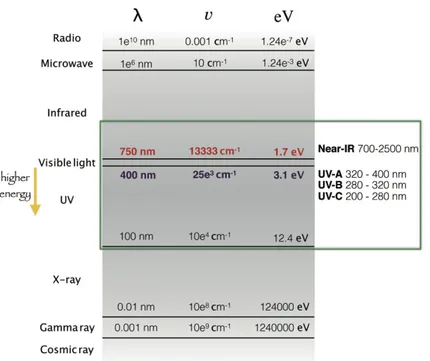
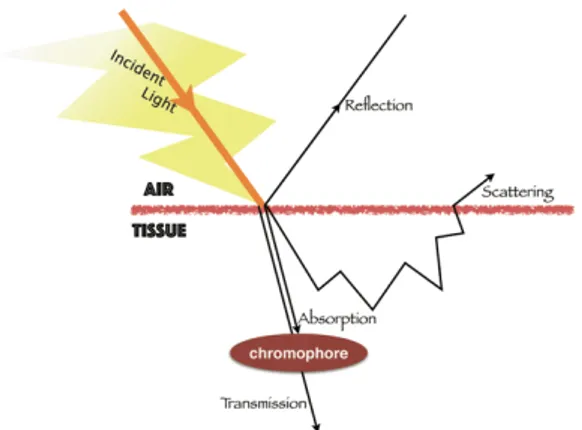
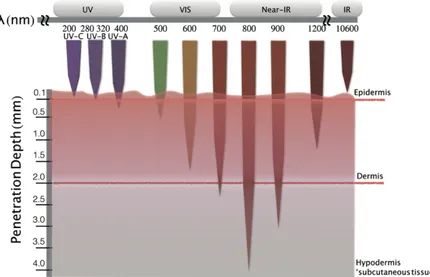
![Figure 12.! Schematic! energy! diagram! for! [Ru(bpy) 3 ] 2+ ! showing! the! lowest! state! that!](https://thumb-eu.123doks.com/thumbv2/123dokorg/2867289.9109/36.773.207.539.91.263/figure-schematic-energy-diagram-ru-showing-lowest-state.webp)
